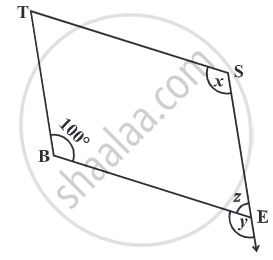Advertisements
Advertisements
प्रश्न
PQR is a triangle formed by the adjacent sides PQ and QR and diagonal PR of a parallelogram PQRS. If in ΔPQR, ∠P : ∠Q : ∠R = 3 : 8 : 4, Calculate the measures of all the angles of parallelogram PQRS.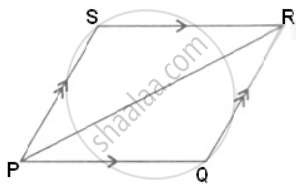
उत्तर
PQRS is a parallelogram.
Let ∠RPQ = 3x°
Then, ∠PQR = 8x° and ∠QRP = 4x°
In ΔPQR,
∠RPQ + ∠PQR + ∠QRP = 180° ...(sum of angles of triangle= 180°)
3x° + 8x° + 4x° = 180°
15x° = 180°
x = 12°
⇒ ∠RPQ = 3x° = 3 x 12° = 36°
⇒ ∠PQR = 8x° = 8 x 12° = 96°
⇒ ∠QRP = 4x° = 4 x 12° = 48°
Now,
∠PSR = ∠PQR = 96° ...(opposite angles of a parallelogram are equal)
∠RPS = ∠QRP = 48° ...(Alternate angles since QR || PS)
∠PRS = ∠RPQ = 36° ...(Alternate angles since QR || PS)
Therefore,
∠PSR = ∠PQR = 96°, ∠RPS + ∠RPQ = 84°, ∠QRP = 84°.
APPEARS IN
संबंधित प्रश्न
In a parallelogram `square`ABCD, If ∠A = (3x + 12)°, ∠B = (2x - 32)° then find the value of x and then find the measures of ∠C and ∠D.
In the following figure, ABCD and PQRS are two parallelograms such that ∠D = 120° and ∠Q = 70°.
Find the value of x.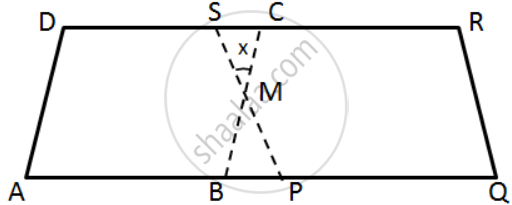
In the given figure, AP is the bisector of ∠A and CQ is the bisector of ∠C of parallelogram ABCD. 
Prove that APCQ is a parallelogram.
In the following figure, ABCD is a parallelogram. 
Prove that:
(i) AP bisects angle A.
(ii) BP bisects angle B
(iii) ∠DAP + ∠BCP = ∠APB
In the following figures, find the remaining angles of the parallelogram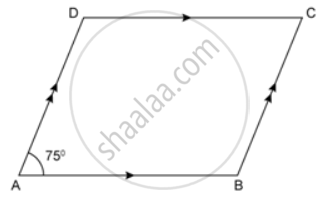
In the following figures, find the remaining angles of the parallelogram
In the following figures, find the remaining angles of the parallelogram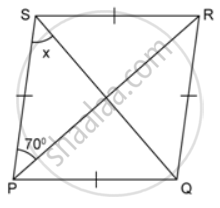
The consecutive angles of a parallelogram are in the ratio 3:6. Calculate the measures of all the angles of the parallelogram.
In the given figure, ABCD is a parallelogram, find the values of x and y.
